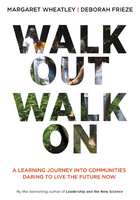WHAT CAN GOVERNMENT AND PHILANTHROPY DO?
For more than half a century, millions of people have been engaged in well-meaning efforts to eradicate poverty from the human experience. Here's how they've fallen short of their goal — and what they have done and still can do to make a real difference.
Consider all the players who've gotten into the antipoverty business. The United Nations and its numerous agencies. National governments throughout the Global South. Purveyors of foreign aid from every rich country on the planet. Regional and other intergovernmental organizations such as the European Community. Countless thousands of individual nonprofit organizations working across borders, within individual countries, and in specific communities. Charitable trusts and foundations. Faith-based groups and religious congregations. In recent years, rock stars, former US presidents, and billionaires have gotten into the business, too. In theory, they're all working toward the same end. In practice, the combination results in a nightmare of clashing bureaucratic and political agendas, and the nominal subjects of their concern, the poor, are usually forgotten.
Collectively, these forces have brought to bear a conservatively estimated total of roughly $2.3 trillion on the problem of poverty, beginning with the Marshall Plan in the years following World War II. This is a huge number. Even if you put that number on the back of an envelope and divide it by, say, 70 years and 100 countries, you learn that the nations of the world have invested on average about $325 million per country every year. Any way you cut it, that's a lot of money.
Perhaps you believe that, collectively, all this expenditure, all this effort, all this sheer commitment to end poverty, and all the explosive economic growth the world economy has experienced since World War II — global GDP has risen 17-fold, from $4 trillion in 1950 to $70 trillion in 2012 — surely must have had some significant effect. Well, yes, that's true. In certain areas, notably public health and primary education (as we'll discuss later), official efforts have undeniably borne fruit. A few development organizations have helped a million or more poor people move out of poverty, but none has reached sufficient scale to make a significant dent on the incidence of extreme poverty. And there's no question that the percentage of the world's people living at or below the subsistence level has declined during the more than 60 years since the bulk of this effort began. The United Nations and the World Bank argue that the proportion has fallen from one-half to 15 percent. Our own calculations suggest that the decline has only been from one-half to about 38 percent, and Gallup's annual well-being surveys imply much the same or worse.[1] As we've already pointed out, there are more desperately poor people today (2.7 billion) than the total population of the world 60 years ago (2.6 billion).
TAKEAWAY #2:
Conventional approaches to end poverty have largely failed, and as Einstein taught us, to continue believing they'll succeed would be madness.
To understand better why such a staggering level of investment and so much effort and dedication have produced such meager results, let's turn first to an area of activity that's most familiar to rich-nation readers: the United Nations and foreign aid.
How Foreign Aid Works (or Doesn't)
According to the United Nations itself, its total budget for 2012–13 is just a tad over $5 billion.[2] In a $65 trillion world economy, this amount is such a tiny fraction of 1 percent that it's not even worth running the numbers.
So, how about foreign aid, then?
In 2011, the 23 wealthy countries that make up the Organization for Economic Co-operation and Development (OECD) contributed a total of $133.5 billion in overseas development assistance — surely a meaningful number.[3] It averages out to more than $1 billion per country in the Global South! However, that number looks a lot less impressive when you drill down to the individual countries' foreign aid programs and learn where the money went and what it was used for.
Take the US program, for instance. The United States contributed the most of the OECD countries, $30.7 billion (about twotenths of 1 percent of GDP). But, as you may already know, the single biggest recipient of US foreign aid is Israel, which received about $3.2 billion in 2010. Of that total, $2.8 billion was military assistance.[4] The same was true of Egypt, the second largest recipient: of $1.55 billion in total support, $1.3 billion was for the military. Aid to other recipient nations was often given to fight terrorists, build police forces, purchase products from the United States, and pay rich-nation fees to US consultants and other experts. Only very rarely did American foreign aid get even remotely close to the poor people whom the public might assume are the beneficiaries of the program.
Fortunately, many other OECD countries tend to place much more emphasis on economic development. The best of these may be oil-rich Norway, which allocates a higher percentage of GDP (just over 1 percent) to development assistance than any other country in the world. For 2012, the Norwegian government allocated roughly $4.5 billion for development aid.[5]
Norway takes a broad view of the challenge of poverty:
The three most important national factors that affect development and the level of poverty in a country are:
? a well-functioning state that safeguards peace, security and human rights, delivers basic services to the population, and ensures that there are good conditions for healthy economic activity and trade;
? an active business sector; and
? a vibrant civil society, with free media and active pressure groups.
Norwegian development policy is intended to influence all of these factors.[6]
This spreads the money widely but limits the direct impact of Norway's $4.5 billion on poor people.
The Netherlands, another respected foreign-aid donor, contributed $6.4 billion in 2010, with nearly 54 percent of the money going to African countries south of the Sahara. SNV, the Dutch development organization, explains that it focuses its work “on three areas in which we excel”: advisory services, knowledge networking, and evidence-based advocacy. In other words, the Netherlands spends the lion's share of its funds on sending Dutch people overseas.[7] (Who else do you think is offering all that advice, gathering local practitioners together, and organizing the advocacy efforts?)
At the same time, Dutch government support has led to important progress in areas like affordable small-holder irrigation, water and sanitation, and health. And the government of Switzerland, another European country that invests a far greater portion of its annual budget in development than the United States, has achieved significant impact in areas such as water and sanitation and agriculture. All these are significant accomplishments — but their net effect on the incidence of global poverty is nil.
So much for foreign aid. Although individual projects have flourished from time to time — to be sure, there are success stories — the overall impact of overseas development assistance has been meager indeed, at least so far as the world's poor are concerned.
However, the foreign aid agencies constitute just one of many players in this global game. Let's see if we can understand better some of the broader reasons why there are still so many poor people in the world today.
Why Traditional Methods Fail
Poor people themselves tell us that the main reason they are poor is that they don't have enough money. We agree with them. At first blush, this seems simple and obvious, but conventional approaches seem to focus on everything but helping poor people improve their livelihoods as the most important first step to ending poverty.
TAKEAWAY #3:
The most obvious, direct, and effective way to combat poverty is to enable poor people to earn more money.
However, instead of this obvious approach, efforts to eradicate poverty have tried just about everything else.
Economic methods
Most large-scale, rich-nation efforts to end global poverty have employed indirect methods. Instead of working directly with poor people, they seek to change the economic environment by growing GDP, building infrastructure, transferring massive foreign aid, and exporting rich-nation goods and services.
Each of these overlapping efforts has typically yielded a reduction in poverty that's been negligible at best. Most such programs end up primarily putting money into the pockets of tiny ruling elites. Since trickle-down economics simply doesn't work, the poor rarely benefit. Building infrastructure — the World Bank's long-time favorite mission — allows top government officials to award construction contracts to their families, friends, and supporters, often with kickbacks in return. Unfortunately, massive foreign aid is often diverted to armies and police forces to preserve the power and hidden bank accounts of ruling elites, to the disadvantage of the country's poor people.[8]
Community development
More than five million citizen-based organizations around the world have joined official and multilateral efforts to combat poverty.[9] The biggest, typically called INGOs (international non-governmental organizations), work in scores of countries, often have operating budgets upward of $500 million, and sometimes possess widely recognizable brands. Among the most powerful few are World Vision, CARE, Save the Children, and Catholic Relief Services (all based in the United States); Oxfam (UK); Médecins sans Frontiéres (Doctors without Borders, France); and BRAC (Bangladesh). At the other end of the spectrum are organizations at the village or community level typically referred to as community-based organizations, or CBOs. They number in the millions and normally operate without paid staff and with little or no money.
To put the work of these private organizations in perspective, it's important to note the fundraising problems that plague so many of them. Ask just about any nonprofit organization to identify its biggest challenge, and unless it's supported by government contracts, chances are you'll be told that challenge is fundraising. According to the Urban Institute, the total activity of the nonprofit sector in the United States in 2009 was $1.4 trillion, or roughly 10 percent of the country's GDP.[10] Big numbers, indeed. Reliable estimates for most other countries — especially those in the Global South — are few and far between. Since the citizen sector is far more developed in the United States, and the United States possesses by far the biggest economy in the world, a rough rule of thumb for the citizen sector globally may be to double the number for the United States alone. That would put the total at about $2.8 to $3 trillion.[11] But before getting carried away with this huge number, keep in mind that the overwhelming preponderance of the sector's programmatic activity worldwide takes place in the Global North, and that only a small percentage of nonprofit funds is put to work in poor countries. (For example, US nonprofit organizations engaged in international aid and development received only about 3 percent of the $299 billion contributed by Americans to “charity” in 2011.)[12] In the Global South, the citizen sector is badly underdeveloped and underfunded, and the amount invested there by rich-nation NGOs is tiny by comparison with foreign aid.
Taken together, these organizations, constituting what Ashoka founder Bill Drayton terms “the citizen sector,” have undoubtedly bettered tens of millions of lives and strengthened thousands of communities worldwide. Some collaborate directly with poor people, but the efforts of NGOs tend to be scattershot and are almost always on a small scale. Scale is the overarching issue for the citizen sector.[13]
From time to time, the citizen sector develops an idea that does spread far and wide. For example, CARE International introduced a variant on microfinance called the “village savings and loan” in Niger in 1991. Unlike the many microfinance institutions (MFIs) that offer only loans, the village savings and loan program is based on savings rather than debt and is managed by members of the community rather than professionals. In the two decades since its introduction, the concept has spread across Africa, Asia, and Latin America through the efforts of Plan International, Oxfam US, Catholic Relief Services, the Aga Khan Foundation, and other NGOs, as well as CARE.[14]
As Nicholas Kristof wrote not long ago in the New York Times, “These ‘village savings and loans' … now serve some six million people in 58 countries.” For example, a woman named Biti Rose in Malawi met regularly with 19 other village loan members, each depositing about 10 cents per week. “This money was lent out to members, and CARE coached them on how to start small businesses. … With a loan of $2, Biti Rose started making and selling a local version of doughnuts, for 2 cents each. Soon she earned several dollars a day in profit. Alfred [her husband] began growing vegetables and selling them … Biti Rose and Alfred then were able to buy seed and fertilizer for their own land” and an additional two acres they leased as well. “These days, they hire up to 10 farm laborers to work for them.”[15]
Unquestionably, village savings and loans provide a valuable service for poor people, but stories such as those of Biti Rose and Alfred are exceptional. In fact, the experience of microfinance institutions such as Grameen Bank and BRAC has shown that loans are largely used for purposes other than business development, such as staving off starvation or paying for religious ceremonies.[16]
Until recent years, most citizen-sector development programs were much less innovative. For example, in many emerging nations, CARE staff would enter a village, dig a well, and leave. For a time, the villagers would enjoy the use of the well — until something broke. Then, since no one locally knew how to fix the machinery or find spare parts, the well would fall into disuse. Similarly, an Indian charity called the Rajiv Gandhi Foundation reports having built and supplied 1,570 small village libraries.[17] Observers have noted that few of the libraries are in use. Most remain under lock and key. Tragically, these experiences are all too typical of the well-meaning work of the citizen-sector around the world. The biggest and best of the INGOs have evolved through the years away from the charity paradigm, as have many NGOs, but enormous numbers of smaller secular groups as well as many faith-based organizations continue to engage in simple giveaways, treating poor people as objects of pity.
Microcredit
Globally, microcredit is currently one of the most favored methods undertaken to fight poverty. There is a lively debate about its impact, with both sides usually citing anecdotal experience to make their cases. However, evidence is quickly mounting that many for-profit providers, as well as some nonprofits engaged in the $70 billion microcredit industry, practice fraud, demand usurious interest rates (sometimes even greater than those of moneylenders),[18] and in at least two celebrated cases have made huge fortunes for their investors at the expense of their clients.[19] In some countries, the results have been tragic: poor people overloaded with debt and nothing to show for it — and even, in one extreme case in India, a wave of dozens of suicides brought on by aggressive debt collectors.[20] Worst of all, the expectations that microcredit would bring about a renaissance among the poor, spawning new businesses that would provide a great number of jobs and lift millions out of poverty, have proven overblown. In fact, the overwhelming majority of microcredit loans are used not for business development but for consumption — as many as 90 percent, according to John Hatch, the founder of FINCA International, one of the largest of the MFIs and confirmed by the Harvard Business Review in 2007 on the basis of off-the-record conversations with the heads of other microfinance programs. (A friend in the industry said to Mal, “Who has the right to tell a poor woman that she shouldn't take out a loan to feed her children?” No one does, so far as we're concerned — but that's beside the point. Microcredit is still actively promoted because it is intended to foster business development.) In many places, microcredit has reportedly functioned well because careful screening has guided microloan money into business development, but in the aggregate the numbers are small. Microfinance has had no discernible overall impact on poverty — not just because so many loans are used for consumption but also because microbusinesses only rarely grow to the point where they can afford to hire outside the family.[21] In 1991, for example, Bangladesh — home of the microcredit movement and the country where it has expanded the most — ranked 136th on the UN Development Programme's Human Development Index (a measure of societal well-being). Twenty years later it ranked 146th.[22]
Social enterprise
The phenomenon of social enterprise has been building rapidly since the early 1980s, when Bill Drayton put the concept on the map with the formation of Ashoka. The US-based organization's 3,000 fellows in 70 countries — with the biggest numbers in Brazil and India — are carefully screened for their entrepreneurial and leadership qualities. Ashoka's rigorous vetting process has identified a large number of truly brilliant and innovative activists. However, there is no emphasis on market-based approaches; Ashoka appears to favor not-for-profit strategies. Nonetheless, Ashoka fellows have achieved significant impact for good.[23] For example, the MicroConsignment Model (MCM), developed in Guatemala by Ashoka fellow Greg Van Kirk, “creates opportunities for villagers to act as micro-entrepreneurs to their fellow citizens, arming the individuals with the education, training and products necessary to successfully market and sell essential products in developing countries — especially in very rural areas.”[24] But Ashoka evaluates the impact of its social entrepreneurs, in significant part, on three criteria five years after the launch of their projects: whether they have changed national policy (52 percent have, according to Ashoka); whether they have changed their fields of work nationally (73 percent); and whether they are continuing their work full-time (94 percent). All these measures are important — but none of them relates in any way to the relevance or impact of the fellows' work on poor people. Moreover, the projects that fellows develop are extraordinarily varied, covering efforts from rural electrification to protecting street children to improving conditions for the physically disabled. As a result, with little commonality among the organization's thousands of projects and their often distant connection to the livelihood of poor people, Ashoka's achievement in fighting poverty is limited when viewed through the lens of scale.
Of course, Ashoka is hardly the only game in town. There are thousands of other social entrepreneurs all over the globe, some of them working alone or with small teams, others affiliated with rich-country networks. The Swiss-based Schwab Foundation for Social Entrepreneurship and Avina Foundation and the US-headquartered Skoll Foundation all subsidize promising entrepreneurs in developing countries. Social entrepreneurship has become an industry in its own right.
In addition, a social venture capital movement has grown exponentially in the last 10 years, based on the premise that for-profit businesses with social missions can provide economically sustainable models for ending poverty. Investors include Acumen Fund, Unitus, Gray Ghost Ventures, ResponsAbility Social Investments, Aavishkaar, Skoll Foundation, and many others. Many of the players in the fields of social venture capital and social enterprise have joined the Aspen Network of Development Entrepreneurs (ANDE); its nearly 200 organizational members are at work in more than 150 countries.[25]
However, despite the laudable efforts of thousands of gifted and dedicated individuals and well-meaning organizations engaged in social entrepreneurship, their collective impact on the incidence of global poverty has been minimal because their individual activities are — literally — all over the map. Again, scale is the biggest challenge.
TAKEAWAY #4:
Although a handful of development initiatives have succeeded in improving the livelihoods of as many as 20 million poor people, none has yet reached significant scale.
By now, you may have gotten the impression that we think action by governments or NGOs is useless. That's certainly not the case. We're firmly convinced that both the public sector and the citizen sector have invaluable roles to fill in a worldwide effort to end poverty.
The Other Side of the Coin: What Works
Now let's look at some areas where progress has been made.
Health care
Overseas development assistance from rich nations and from the United Nations has brought about spectacular improvements in health over the past half-century. The eradication of smallpox and the near elimination of polio, plus recent efforts to combat the spread of HIV/AIDS, have saved millions of lives and captured the public imagination.
The world's experience with HIV/AIDS is a case in point. Since the epidemic began, an estimated 30 million people have died from AIDS and related causes — a number approaching the death rate of the 1918 influenza epidemic, which killed as many as 50 million — and “[t]he number of people living with HIV rose from around 8 million in 1990 to 34 million by the end of 2010.” However, “[t]he overall growth of the epidemic has stabilised in recent years. The annual number of new HIV infections has steadily declined and due to the significant increase in people receiving antiretroviral therapy, the number of AIDS-related deaths has also declined.”[26] Sub-Saharan Africa (including all those nations lying south of the Arabic-speaking countries on the Mediterranean shore) accounts for perhaps two-thirds of those currently living with HIV/AIDS, and there access to antiretroviral therapy has been limited because of its high cost. Still, a combination of preventive strategies and subsidized therapy has resulted in flattening the growth curve of the syndrome in many African countries. The AIDS epidemic is by no means over, but its demographic impact is becoming steadily less pronounced.
The progress on smallpox, polio, AIDS, and many other less-publicized diseases has resulted in enabling the world's people to live longer lives. For example, average life expectancy at birth in India around 1950 was 38 years; today it is 65. In China, it was 41; today it is 77. Over the same period, average life expectancy in the United States has risen from 65 to approximately 80, a much less dramatic rate of increase.[27] Life expectancy has been rising worldwide since 1950, with the exception of sub-Saharan Africa (and even there the mortality curve has flattened).
Despite the enormous advances in health care in the Global South, there's a great deal of unfinished business in the field. Malaria, diarrhea, and tuberculosis fall not far behind HIV/AIDS in the numbers they kill. Developing countries account for 95 percent of the global prevalence of AIDS and 98 percent of active tuberculosis infections. Furthermore, 90 percent of malaria deaths occur in sub-Saharan Africa. Together, these three diseases account for 10 percent of global mortality.[28] A great number of other often-fatal diseases, many of them little known in the North, also beckon for solutions. Moreover, the public health systems of poor countries are notoriously weak.[29] All these continuing challenges open up innumerable opportunities for governments, the United Nations (chiefly the World Health Organization, or WHO), and foreign-aid programs to double down on their efforts in health care. The entry of the Bill & Melinda Gates Foundation has helped in a major way to direct attention to these challenges, not to mention the large sums of money the Gates Foundation has invested. But so much more needs to be done! Since top-down health-care initiatives have proven so successful in the past, we believe it makes very good sense for the major players to expand their efforts in the field.
At the same time, health care offers entrepreneurs a host of opportunities, too, as we'll make clear later.
Education
Worldwide, education is also largely a story of success. Literacy has increased markedly in recent decades in every region of the world. According to UNESCO, about 56 percent of the world's population was literate in 1950. By the end of the century, that figure rose to approximately 82 percent. In developing countries, the rate increased from 47 to 76 percent; in sub-Saharan Africa, it rose from 28 to 60 percent. “Net primary school enrollment” (counting only school-age children) now approaches 90 percent worldwide and is continuing to rise.[30]
As any one of thousands of unemployed master's degree holders in Nigeria, Egypt, or India can attest, laudable gains in education in developing countries don't necessarily ensure a substantial decrease in the incidence of poverty. And it's a good bet that many primary schoolchildren throughout the Global South would look puzzled if you quizzed them about what they learned in school. Truth to tell, schools throughout the region are typically very poor. A very large proportion of children may well learn to read and write at a rudimentary level, but absenteeism is the rule among teachers in many countries rather than the exception.[31] More often than not, teachers are paid only a pittance and are forced to seek other jobs simply to survive. Students who thrive in such systems and later attend secondary school and seek even further education are a small minority.
Here, too, then, there are abundant opportunities for further work. Since governments — together with UN agencies (especially UNICEF, the United Nations Children's Fund), foreign-aid providers, and numerous NGOs — have achieved such startling success in education, it seems wise to suggest that they continue their work. Perhaps a major global investment in teachers' salaries could alone make an enormous difference.
As in health care, education offers numerous openings not just for governments and philanthropists but also for business. We'll cover that topic in the final chapter.
What More Can Governments Do?
The prevalence of poverty is predominately a failure of government.
In theory, governments everywhere could virtually end poverty by providing national defense focused on protecting the country but not on attacking others, and police to maintain law and order without infringing on human rights; furnishing universal free education from preschool through the university and universal free health care; instituting a genuinely progressive tax code that would narrow the inequities between haves and have-nots; and maintaining a broadly based social safety net, enabling that society's most vulnerable members to live with dignity. With all that in place in every country, it shouldn't even be necessary to take extraordinary action to eradicate poverty. Everyone wouldn't be happy with this solution, but we believe that a substantial majority of the world's population would accept it in a heartbeat.
Pipe dreams aside, we live at a time when civilization hasn't yet lived up to its name. Much as we might like to solve all our problems with a snap of our fingers, we're forced to cope with a grossly imperfect world. We have to content ourselves with seeking practical remedies for immediate problems.
What, then, are the most vexing problems that surface in so many of the developing nations of the Global South? A list of any such problems would have to include political instability, corruption, disadvantageous trade relationships with rich countries, the absence of incentives for the elite to invest funds locally, a weak or dysfunctional legal system, a lack of physical infrastructure, poor conditions for conducting business, and inadequate control of natural resources. Any significant step taken to mitigate the impact of any of these problems is cause for celebration. Realistically, however, few of these problems can be effectively addressed by developing-nation governments themselves, even with support from regional and global agencies as well as rich nations.
In the absence of effective efforts to address more fundamental problems, we would like to see emerging-nation governments take action to make it easier to conduct business — and, not incidentally, to facilitate the establishment of businesses like those we propose in this book. Among these steps would be upgrading the legal system, expanding physical infrastructure, and improving business conditions. In practice, making police and the courts accountable would be a big step forward. Building more all-weather roads would help a lot, too. And the thickets of often obscure laws and regulations that make establishing a business a months-long nightmare in many countries should be streamlined.
Do we expect any of this to happen? Not right away, certainly. However, as fanciful as they may be, these measures are at the top of our wish list.
We recognize that some of the fundamental problems we've observed are rooted in a lack of a shared national vision and in ironclad control by a wealthy elite determined to perpetuate its privileges. These conditions are unlikely to change in the near term, but over time the citizen sector might erode them.
An Ideal Role for the Citizen Sector
For decades, as the number of NGOs has mushroomed all over the planet, millions of people, both volunteers and paid staff, have become engaged in a very wide range of development activities throughout the Global South. A substantial portion of these organizations — more than five million of them across the planet — are devoted to furnishing human services that governments fail to provide. In our view, it would make more sense in the long term for the same energy to be devoted to organizing for change in government policies and practices instead of being dissipated on low-impact social services.
In the ideal world we envision, the citizen sector, including foundations, trusts, NGOs, and CBOs of all types, would focus their efforts on the following activities:
? Organizing to monitor government, highlighting its failures and errors. In countries where they're permitted (or can function under wraps where they're not), citizen watchdog organizations can make a big difference by publicizing corruption, systematic uses of violence to stifle dissent, and other sins of government. International organizations such as Human Rights Watch, Transparency International, and Amnesty International are excellent examples on the global scale. All of them have chapters or offices on the ground around the world.
? Policing predatory business activities, since the abuses committed by a wealthy and powerful elite take place in the private sector as well as through government. As a rule, government regulation of business is slight to nonexistent in developing countries — and no market can be called free unless there is effective oversight to keep it that way. Private citizen organizations like Social Accountability International and Corporate Accountability International need to fill that gap.
? Pioneering innovative, market-based service-delivery models. Several NGOs operate market-based programs to address the challenges of poverty — International Development Enterprises (IDE), TechnoServe, IDEX (International Development Exchange), KickStart — and there are numerous others, some of them the handiwork of Ashoka fellows or other social entrepreneurs. Typically, these NGOs lack the capacity to raise the necessary funds to take their projects to scale. In such cases, the programs they pilot might be adopted — with full credit — by businesses such as those we advocate in these pages.
? Building civil society. A vibrant citizen sector freely engaged in advocacy is essential to bring about the policy shifts that will help make possible the elimination of poverty. However, to grow civil society to the scale required to create massive social change, a nation's government must first craft an enabling environment that eases the process of forming citizen groups, encourages the most successful with official recognition and government contracts, and fosters the establishment of an official or semiofficial body that monitors the performance of NGOs and assures citizens that such groups are both transparent and accountable. Practically nowhere in the Global South has this happened, and the academic world has taken notice. Scholars in many social science disciplines have been at work for decades to create the intellectual framework for civil society, and some have received support from philanthropists and foreign-aid programs to introduce the concept into nations throughout the region. Our hope is that academics in local universities, with support from the news media, will take up the cause and trigger the development of new citizen-sector organizations that will build the necessary organizational infrastructure. These new organizations can build on the work of such capacity-building organizations as Resource Alliance, philanthropic ventures such as the Aga Khan Foundation and Synergos, and the pro-bono work of such consulting firms as McKinsey & Company and Deloitte Consulting.
Viewed more broadly, we believe that the citizen sector could greatly increase its impact throughout the Global South if it shifted from service delivery to building the capacity of poor people for self-governance by collaborating more closely, by pooling its widely scattered resources through joint efforts on a larger scale, and by taking direct action to support the emergence and replication of scalable, market-based solutions.
Let's look at a few examples.
Partners in Health
Dr. Paul Farmer is a Harvard-educated medical anthropologist and physician who has provided medical care to some of the poorest populations in the world. Cofounder of Partners in Health (PIH), Farmer is perhaps best known for his work in the Central Plateau of Haiti, where he and his partners started the Clinique Bon Sauveur in 1985. PIH expanded to provide outreach through bimonthly mobile clinics and a cadre of 200 health-care workers. They constructed a major hydraulic system to bring clean water to the village of Cange, eliminating child deaths caused by diarrhea in the village, and expanded further to provide a range of free services for patients with HIV. Tracy Kidder's Mountains Beyond Mountains, which tells Farmer's story, became a best seller, and in 2004, PIH received a $44.5 million grant for a multicountry tuberculosis treatment and research initiative.
The fact that these health services are provided essentially free makes them admirably accessible but at the same time creates an impenetrable barrier to scale.
What could PIH do to bring the health services it provides to 100 million poor customers?
The people PIH treats in Haiti come from small villages and earn their primary livelihoods from farming. Most of them can't afford to pay for health care, so it's reasonable to make it available free. But what if PIH put as much energy into helping its patients improve their livelihoods from agriculture as it does now on treating their illnesses? What if the organization started creating new markets for income-generating, labor-intensive, irrigated crops with high nutritional value, using proven scalable strategies? If they could double their current income, the clinic's patients would experience a dramatic drop in the incidence and prevalence of illness. Within three years, they would be able to pay for most of their health-care needs with dignity. Over time, the health-care services provided by Partners in Health could become economically sustainable and scalable.
Microcredit finance institutions (MFIs)
As we've noted previously, a huge portion — as high as 90 percent — of microloans are used not to capitalize businesses but for consumption. If the microcredit industry were to adopt businesslike screening methods as a standard to ensure that its loans were actually put to work supporting income-generating activities, the global impact could be enormous. Reportedly, 300 million people worldwide have received microloans. If those loans had actually funded 300 million new businesses, a substantial number of families would no longer be experiencing the pain of poverty. The industry's failure to lower the incidence of poverty even in Bangladesh, where its efforts have been most concentrated, testifies both to the truth of the reports about the loans' actual use and to the potential for impact. For example, $1 million in microcredit loans in Bangladesh would enable 40,000 small farmers to install treadle pumps, which would permanently increase their yearly net income by $4 million after paying off their loans with interest in less than six months.
A Glimmer of Hope
Philip and Donna Berber are Paul Polak's longtime friends. Two weeks before the dot-com bubble burst, Philip sold his company, CyBerCorp, a pioneer in online stock trading, to Charles Schwab for $488 million. Following their vision to make life better for poor people in Ethiopia, Philip and Donna allocated a substantial portion of their new wealth to A Glimmer of Hope Foundation (AGOH), a nonprofit development organization that has helped around three million poor people get access to health services, safe drinking water, hygiene and sanitation, microfinance, and education over the past 12 years. To accomplish this, AGOH contributes $9 million a year to large Ethiopian NGOs to drill wells and build schools and health clinics, with villagers contributing their labor.
How could Glimmer of Hope scale up to improve the lives of 100 million poor people in Ethiopia and other countries? A program they began recently provides a promising opportunity. It provides loans to farmers to dig a shallow well, install a diesel pump, and start growing and selling irrigated vegetables. Farmers have been able to pay off their loans, save money, and invest in educating their children and expanding their income-generating farming operations.
AGOH also provides clean drinking water in remote villages around Ethiopia, where villagers simply can't afford to pay for it. What would happen if AGOH could rapidly expand a whole range of economically profitable microirrigation, microenterprise, and livelihood-enhancing rural initiatives in Ethiopia? Would they eventually be able to provide affordable health, education, clean water, and sanitation services that poor people could afford to pay for, and by doing so expand their reach to 100 million customers?
We don't know. But our experience suggests this approach could achieve far more than simply providing free services.
Still, as we hope we've made clear, we remain convinced that the principal vehicle for ending poverty must be the private sector. We'll delve more deeply into our reasons for that conviction in the following chapter.
注释:
[1]Julie Ray, “High Wellbeing Eludes the Masses in Most Countries Worldwide,” April 19, 2011, Gallup,
[2]United Nations, “Regular UN Budget, 2012–2013,” Department of Management, February 2012.
[3]OECD, “Development: Aid to Developing Countries Falls Because of Global Recession,” April 4, 2012,
[4]Washington Report on Middle East Affairs, “U.S. Financial Aid to Israel: Figures, Facts, and Impact,”
[5]Norwegian Agency for Development Cooperation (Norad), See also Wikipedia: “Norwegian Agency for Development Cooperation,”
[6]Norwegian Ministry of Foreign Affairs, “Norwegian Development Assistance in 2008 — Priority Areas,”
[7]SNV Netherlands Development Organisation, “SNV Connect 2012,”
[8]Shelves-full of books, official reports, and journalistic dispatches have been written about foreign aid and its consequences. It's not our place to supply a lengthy bibliography. To get a sense of how we arrived at the conclusions stated in the text (which reinforced our own observations over many years), consult four books: William Easterly, The White Man's Burden: Why the West's Efforts to Aid the Rest Have Done So Much Ill and So Little Good (New York: Penguin Publishing, 2006); Dambisa Moyo, Dead Aid: Why Aid Is Not Working and How There Is a Better Way for Africa (New York: Farrar, Straus and Giroux, 2009); Paul Collier, The Bottom Billion: Why the Poorest Countries Are Failing and What Can Be Done About It (New York: Oxford University Press, 2007); and Michaela Wrong, It's Our Turn to Eat: The Story of a Kenyan Whistleblower (New York: Harper-Collins, 2009).
[9]Conservative estimate by Mal Warwick, compiled from country-by-country statistics for China, India, Brazil, the United States, and several other countries where the citizen sector has flourished.
[10]Urban Institute, National Center for Charitable Statistics, Core Files (1999–2009),
[11]Giving USA 2012 (Indiana University Center on Philanthropy, 2012).
[12]Based on Mal Warwick's 30 years of experience working with NGOs around the world.
[13]Giving USA 2012.
[14]“Small Wonder: A New Model of Microfinance for the Very Poor Is Spreading,” Economist, December 10, 2011.
[15]Nicholas D. Kristof, “Doughnuts Defeating Poverty,” New York Times, July 4, 2012.
[16]“Many heads of microfinance programs now privately acknowledge what John Hatch, the founder of FINCA International (one of the largest microfinance institutions), has said publicly: 90 percent of microloans are used to finance current consumption rather than to fuel enterprise.” Steve Beck and Tim Ogden, “Beware of Bad Microcredit,” Harvard Business Review (September 2007).
[17]Rajiv Gandhi Foundation, Annual Report 2008–2009, This is the most recent annual report available online at this writing.
[18]Hugh Sinclair, Confessions of a Microfinance Heretic (San Francisco: Berrett-Koehler Publishers, 2012).
[19]In 2007, the Mexican microcredit giant Banco Compartamos, originally a nonprofit, went public through an IPO that yielded more than $400 million for shares representing just 30 percent of the company. The US-based microfinance giant Acción, the biggest shareholder in Compartamos, sold just about half its shares and realized more than $120 million in proceeds. In 2010, SKS Microfinance, one of India's largest microcredit providers, went public too, raising $358 million and enriching several American investors. These included SKS founder and chairperson Vikram Akula, an Indian-American, and several prominent Silicon Valley venture capitalists.
[20]Sinclair, Confessions of a Microfinance Heretic.
[21]Ibid.
[22]United Nations Development Programme, “International Human Development Indicators,”
[23]Ashoka: Innovators for the Public,
[24]Brett Smith, “Social Entrepreneurship: The MicroConsignment Model,” Forbes, May 10, 2011. For in-depth information on MCM, see Also see David Bornstein and Susan Davis, Social Entrepreneurship: What Everyone Needs to Know (New York: Oxford University Press, 2010).
[25]See Aspen Network of Development Entrepreneurs (ANDE),
[26]AVERT International, “Global HIV and AIDS estimates, 2009 and 2010,”
[27]World Bank, “School enrollment, primary,” Data from UNESCO Institute for Statistics.
[28]Sarah Bosely, “The Killer Diseases That Target the Poor,” Guardian, August 21, 2002, World Health Organization, “Diseases of Poverty and the 10/90 Gap,” United Nations Population Fund, “HIV/AIDS and Poverty,” UNFPA State of World Population, 2002; Roll Back Malaria, “What Is Malaria?” Also see data and statistics from the World Health Organization,
[29]Laurie Garrett, Betrayal of Trust: The Collapse of Global Public Health (New York: Hyperion Press, 2011).
[30]UNESCO, “Mapping the Global Literacy Challenge”(chapter 7), in Education for All Global Monitoring Report 2006.
[31]Kaushik Basu, “Combating India's Truant Teachers,” BBC News, November 29, 2004, Also, from Kenya, see Wachira Kigotho, “So What Exactly Ails the Teaching Profession?,” Standard Digital, September 21, 2011,















